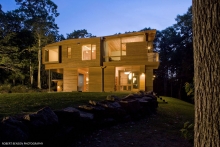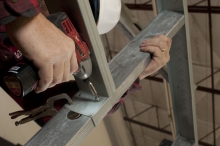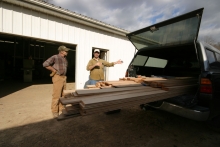Water and Ice Dam Protection
In addition to sealing air leaks, properly ventilating, and adequately insulating, the next time your roof is replaced you should consider installing water and ice dam protection along the eave as opposed to standard underlayment. Waterproof membranes are required for new construction by the 2009 International Residential Code (IRC) for asphalt shingle roof systems installed on homes that have a history of ice damming. Water and ice dam protection, or what is known by roofers as self-adhering, modified bitumen membrane, should be installed along the eave, atop the sheathing, extending at least 24” up the roof surface past the exterior wall line of the structure. It should also be installed inside valleys, along rake edges, and around flashed penetrations. Self-adhering, modified bitumen membrane is virtually impermeable, meaning water cannot pass through as a vapor or a liquid. It is important that any interior exhaust systems direct humid air to the exterior side of the roof and that all passive functions within an attic (ventilation and insulation) be proper and adequate. Should they be inadequate, or should air leakage occur, condensation could develop on the underside of the sheathing where water and ice dam protection is installed, and a different series of moisture problems would persist.









